A good evaluation of a pump’s performance at the enthusiast level involves combining the results from two different tests: pump output and pump noise. With these two sets of data one can see how much noise can be expected to achieve a certain flow rate or pressure. Additionally the combined data set can be compared to other pumps with have been tested in the same manner, preferably with the same test equipment on the same test benches. The problem we had here was that the VPP755 could not be set to match existing data sets of flow rate or pressure due to the control limitations it has with the 5 Stages of pump output. We’ll get to how the data matching was overcome when we get to sound testing.
For the Pump Output Performance my usual restriction bench was used with the addition of the inline volt/amp meter to compensate for the voltage variations caused by the VPP755 voltage regulation. At each stage the power at the pump connector was set to ~12.1V. Essentially this test measures the flow rate and pressure output of the pump. To test the pump we use a flow meter and a differential manometer and vary restriction by adjusting a brass gate valve. We adjust the gate valve to give different flow points and measure the pressure “gain” across the pump using the differential manometer. To better understand how to read these plots check out this guide.
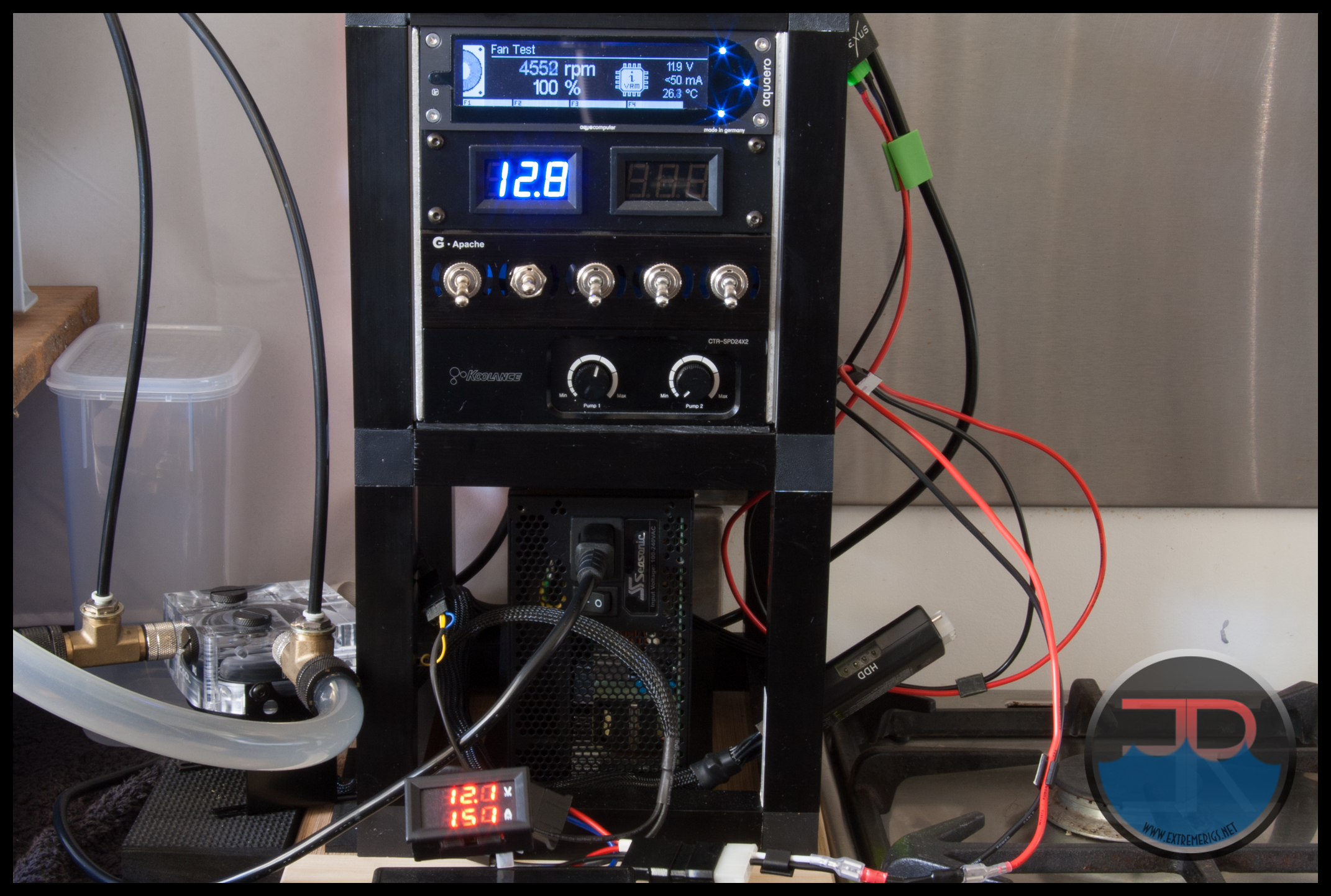 The data recorded was taken with the digital volt/amp meter as pictured above. Later an inline Current Meter and DMM were used to verify the initial readings. A small variance in amps was noticed, but we felt it was not enough for a complete re-test to be warranted.
The data recorded was taken with the digital volt/amp meter as pictured above. Later an inline Current Meter and DMM were used to verify the initial readings. A small variance in amps was noticed, but we felt it was not enough for a complete re-test to be warranted.
The VPP755 was mounted to the an Eisdecke D5 top and the best performing port combination (Inlet 3 & Outlet 1) was used to conduct all the flow vs. pressure tests.
Stage 1:
Stage 2:
Stage 3:
Stage 4:
Stage 5:
While we were at at we cranked the voltage up to the VPP755 max rating of 13 Volt to see what the output would be.
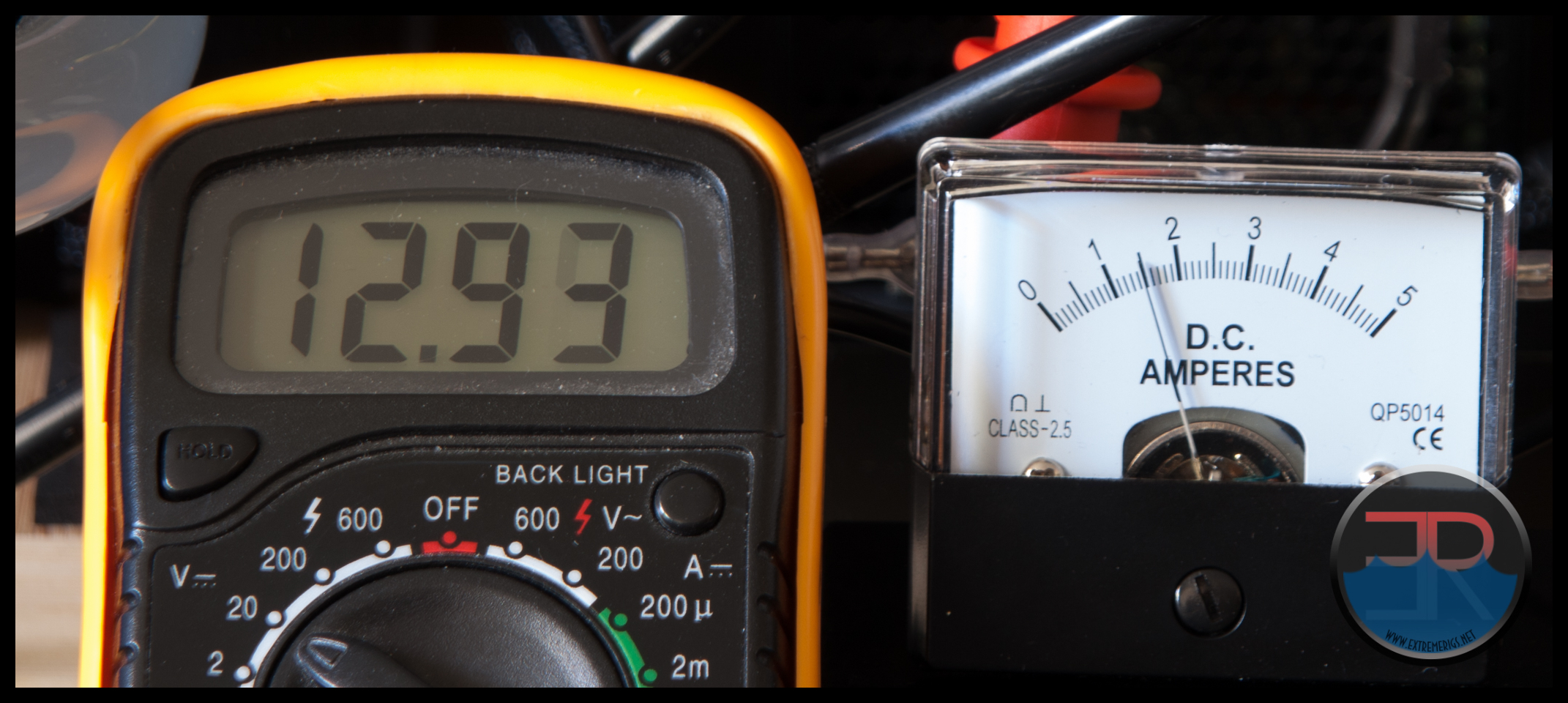 The readings for both GPM and pressure at 13V were pretty much equal to what was achieved at 12.1 Volt.
The readings for both GPM and pressure at 13V were pretty much equal to what was achieved at 12.1 Volt.
Before moving on let’s put the results for each stage onto a plot so we can see a visual interpretation of the data.
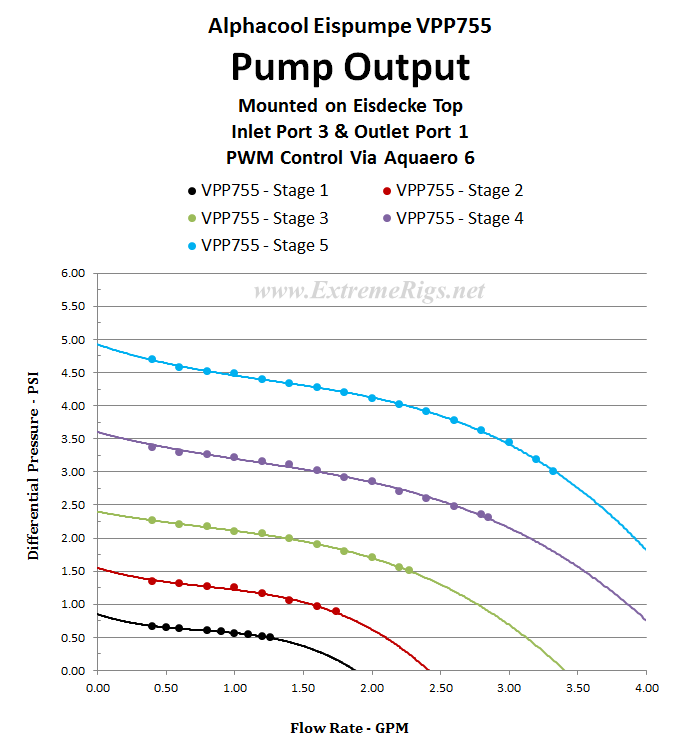 Now let’s overlay the above plot with the power usage. With 2 different scales (vertical axis) the output and power results have no correlation to each other, but it can be handy to see the power usage at different output levels.
Now let’s overlay the above plot with the power usage. With 2 different scales (vertical axis) the output and power results have no correlation to each other, but it can be handy to see the power usage at different output levels.
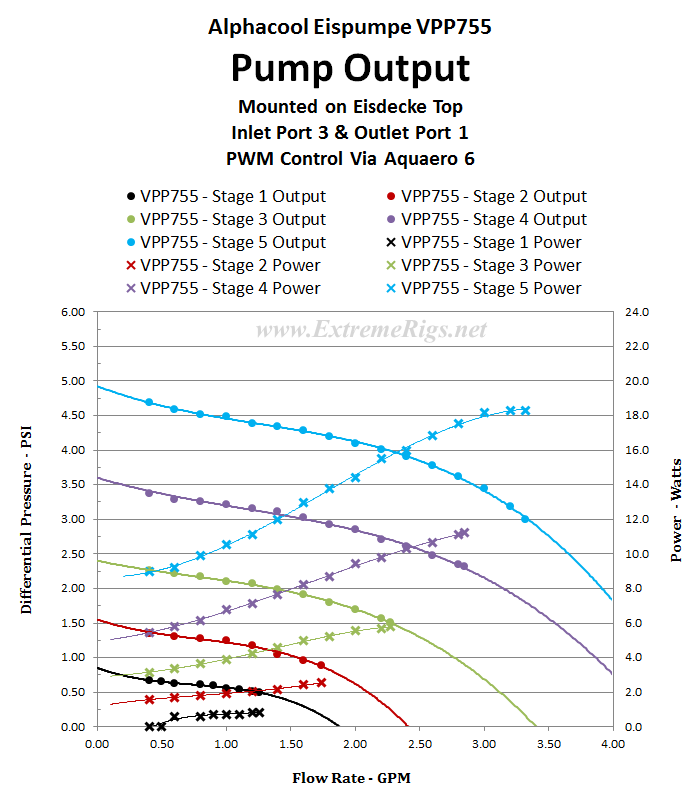 Lets take a look at how the VPP755 stages compare to our usual output comparison on the D5 USB. This version of the D5 pump is an electronically controlled Vario (similar to the VPP755) which is able to have the power adjusted via Aqua Computer’s Aquasuite software.
Lets take a look at how the VPP755 stages compare to our usual output comparison on the D5 USB. This version of the D5 pump is an electronically controlled Vario (similar to the VPP755) which is able to have the power adjusted via Aqua Computer’s Aquasuite software.
While the maximum output for each pump is the only true comparison in the above plot, it is interesting to look at the other levels.
But of course what is most interesting is that maximum comparison, where on Stage 5 the VPP755 has the performance edge over the D5 running flat out.
Round 1 goes to the newcomer, and we have to admit to being both a little surprised and quite impressed the the VPP755 has better output than the D5 and while the plots above don’t show it, the VPP755 is much more energy efficient. But how loud is it ? What’s the catch?
Next Up, Noise Levels and Power







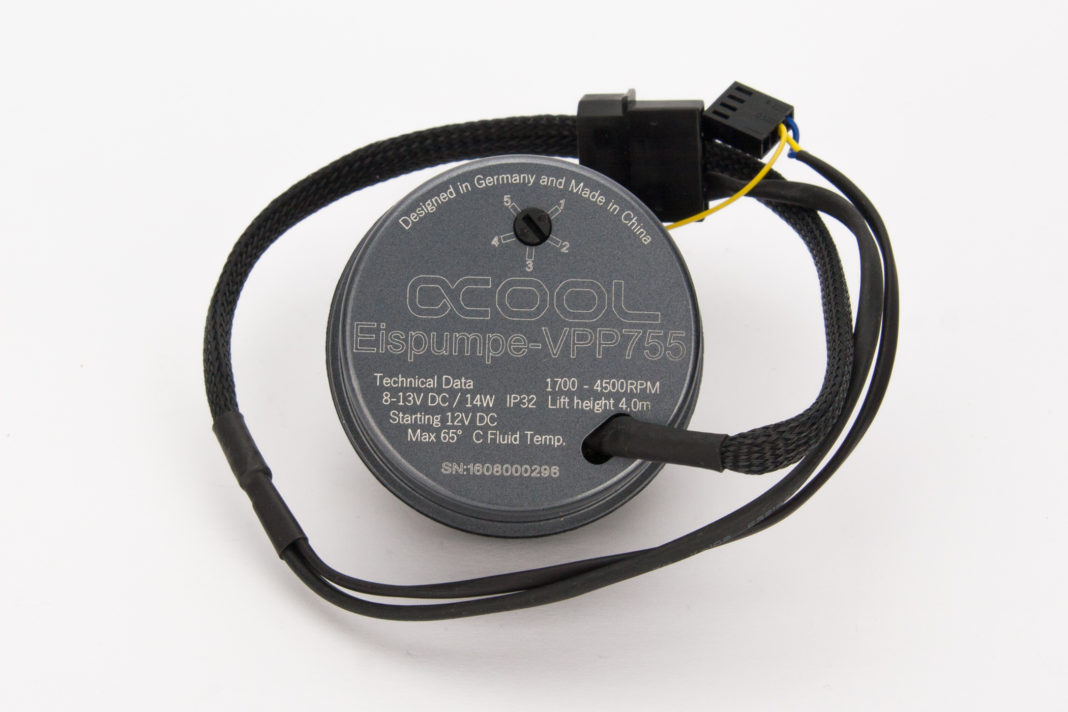
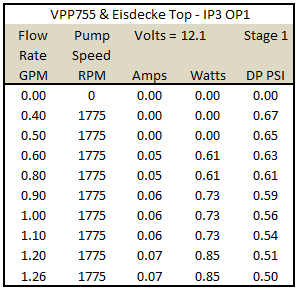
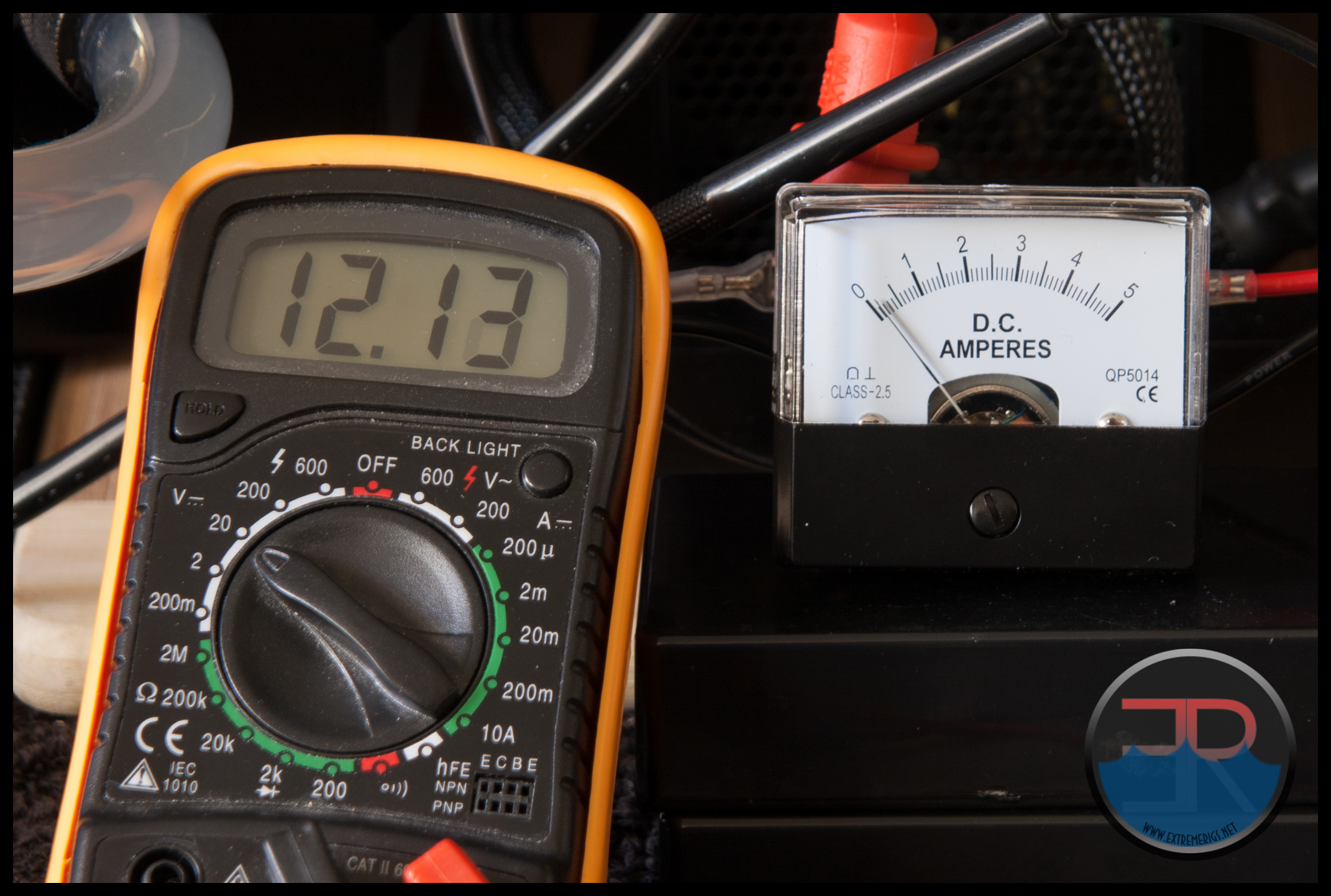
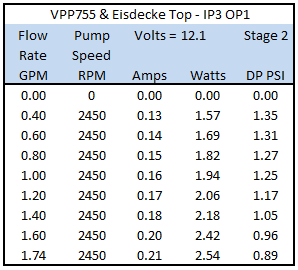
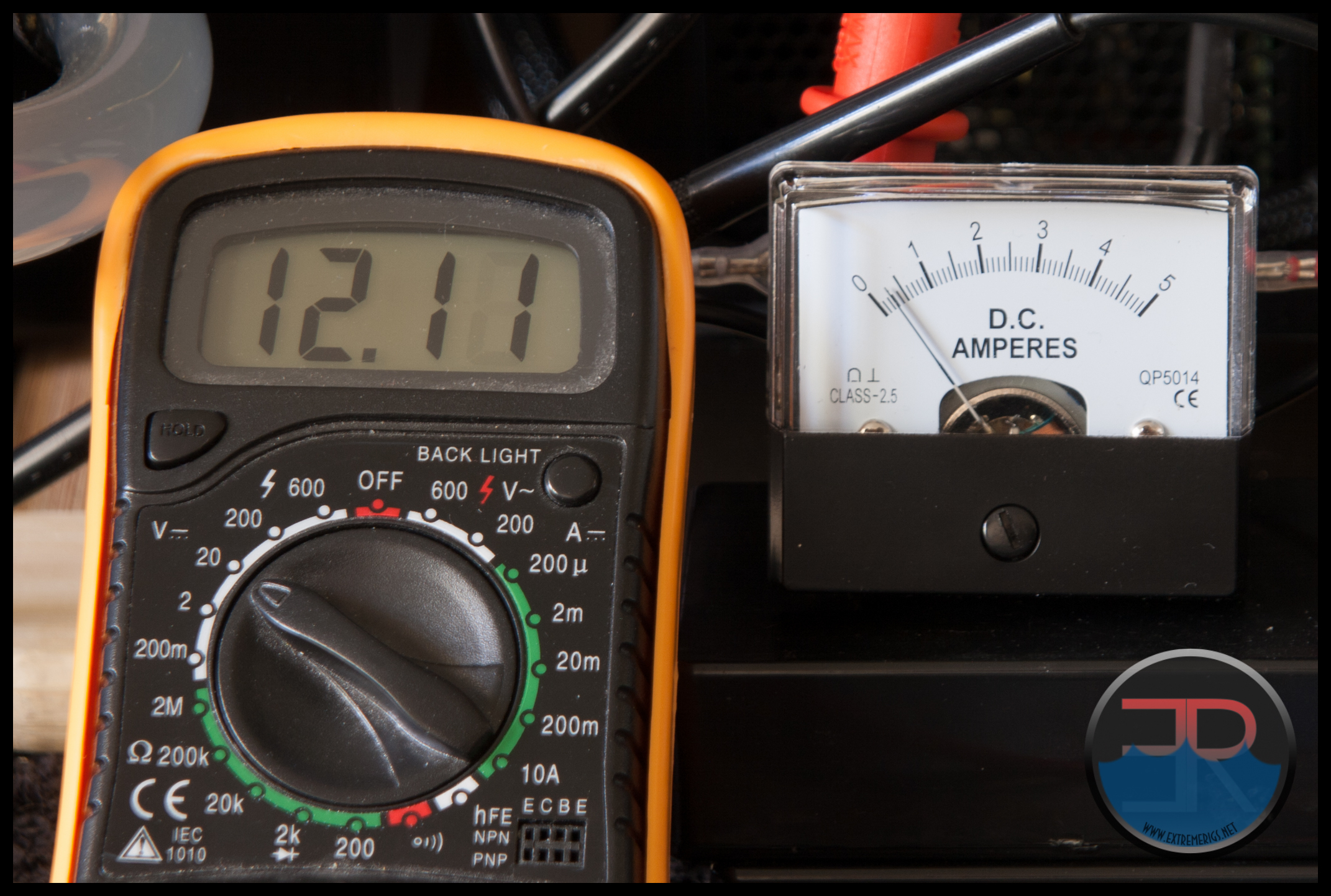
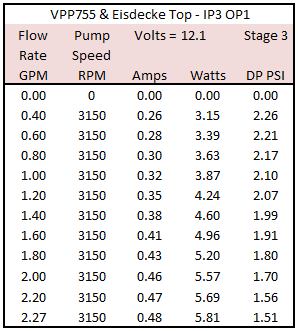
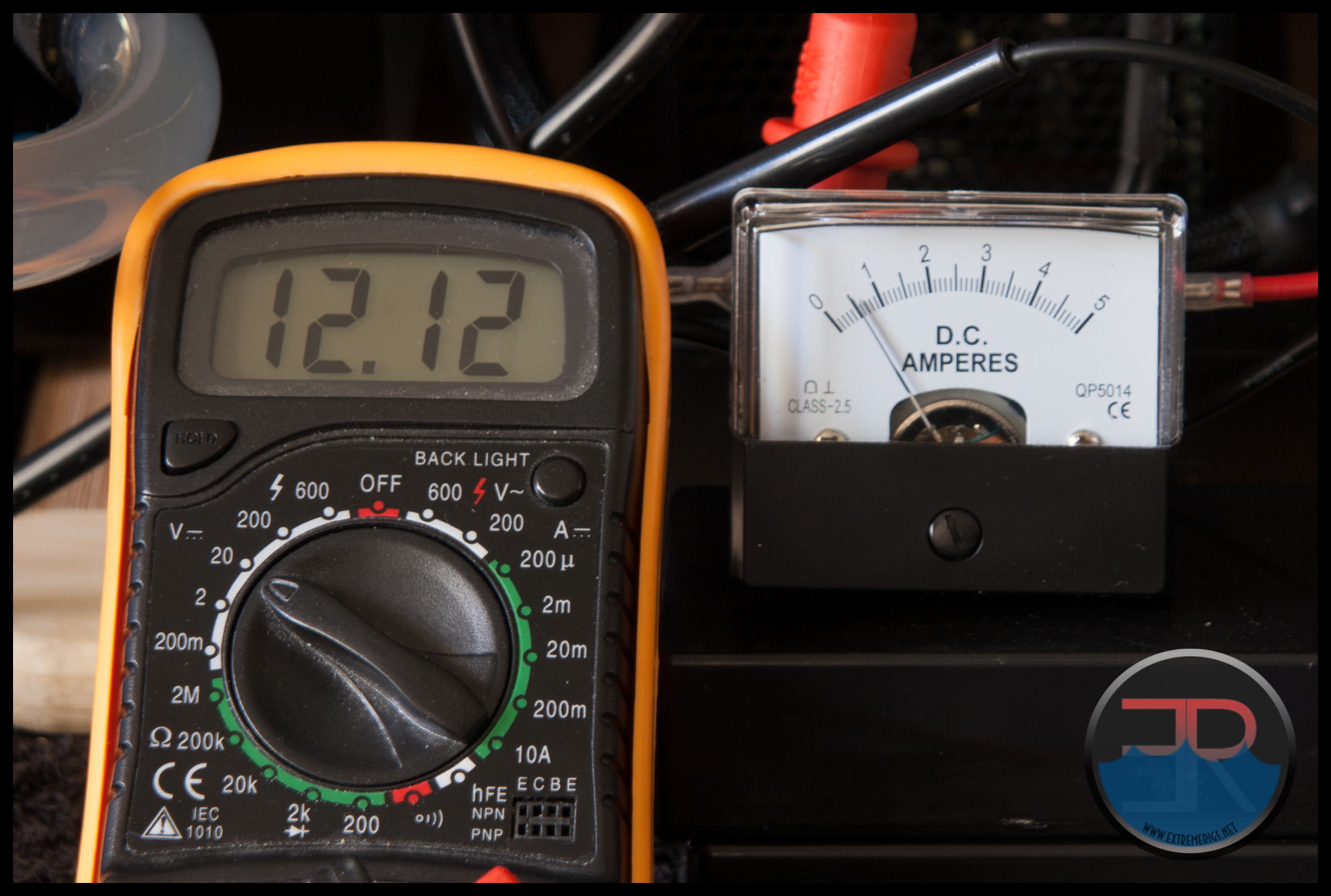
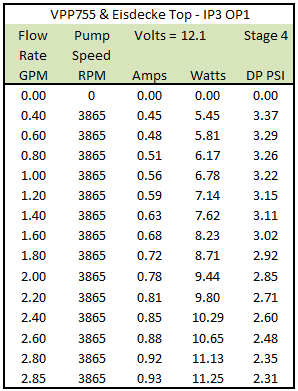
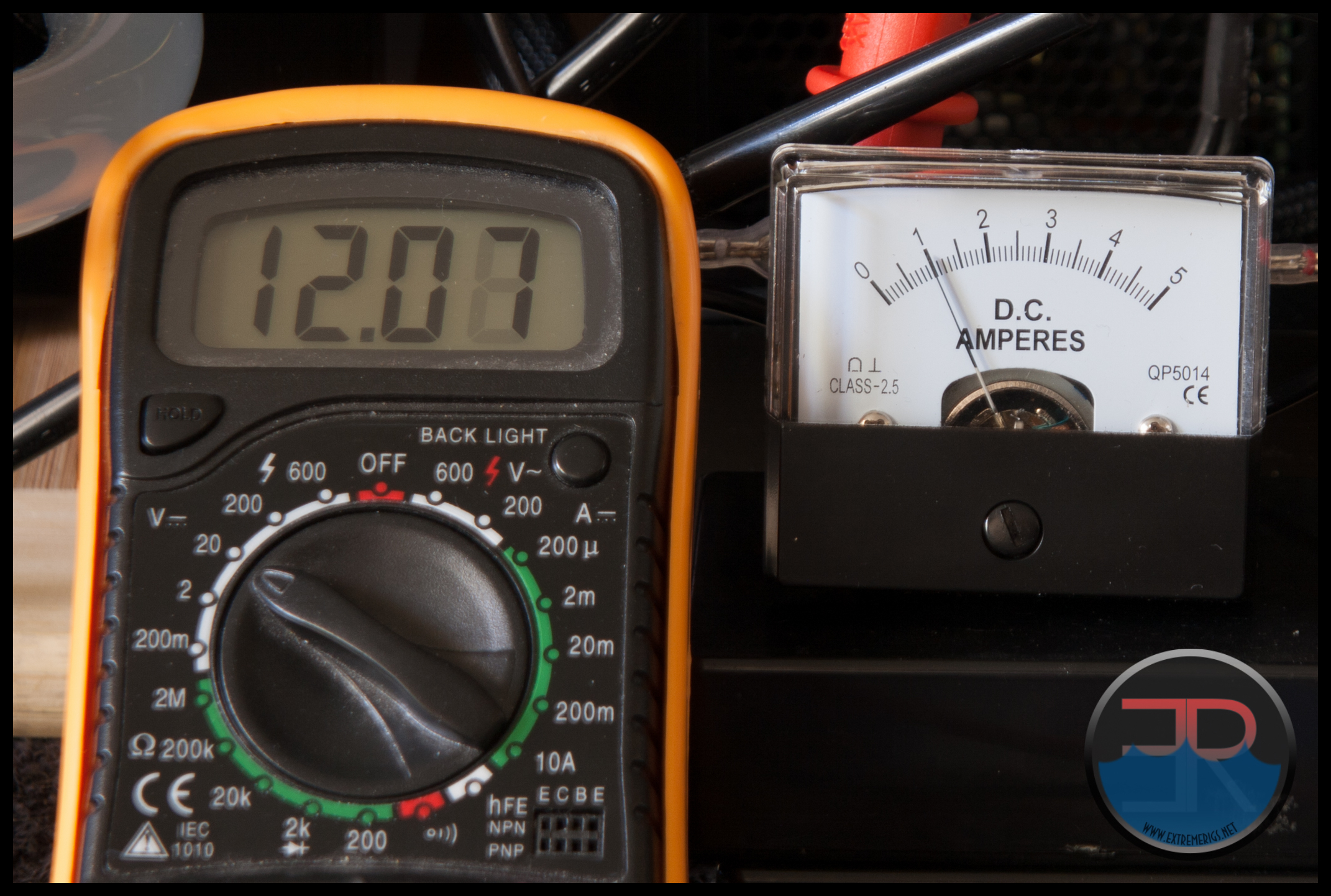
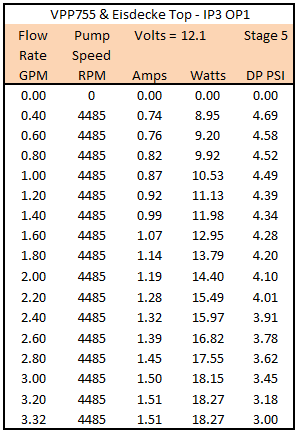
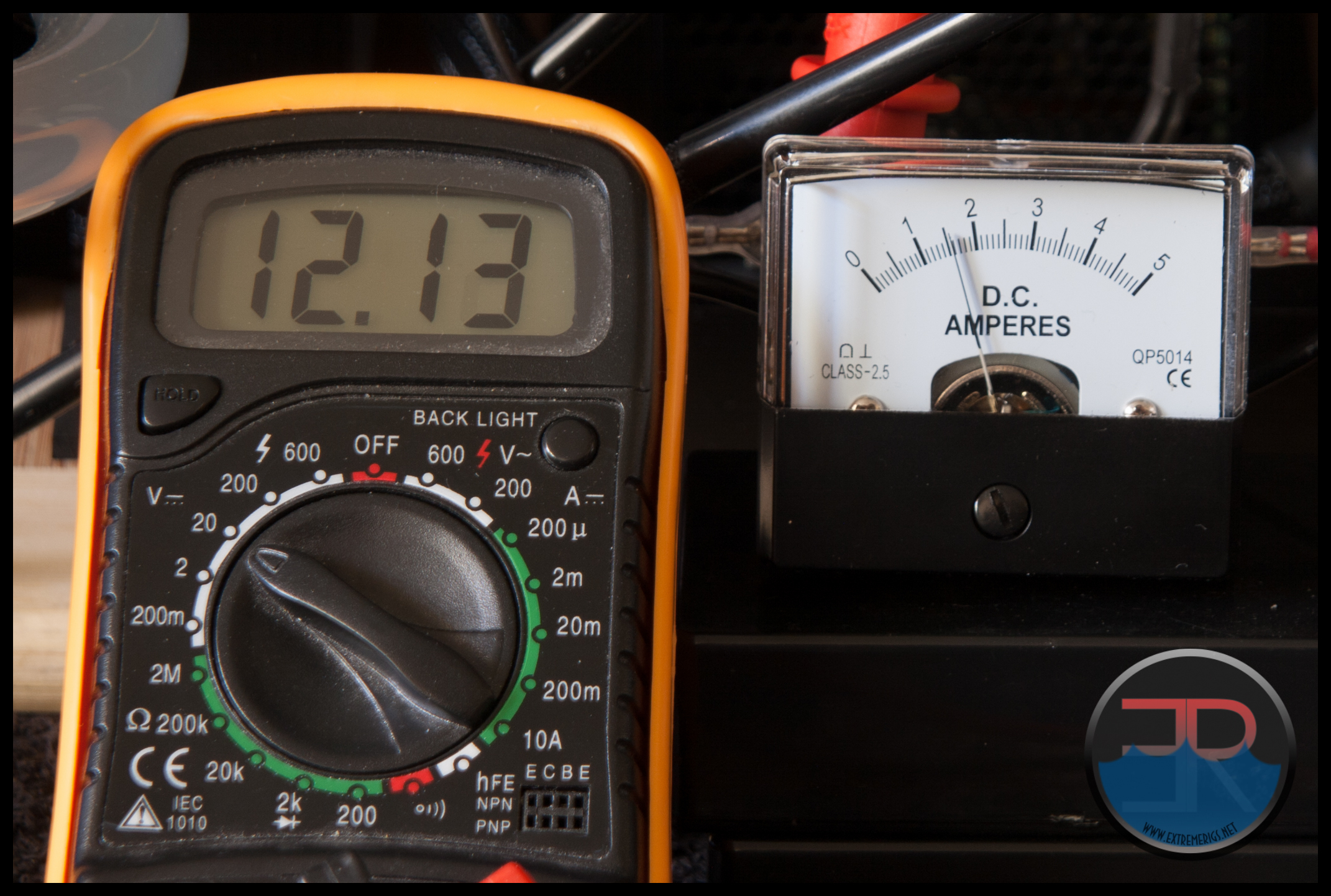
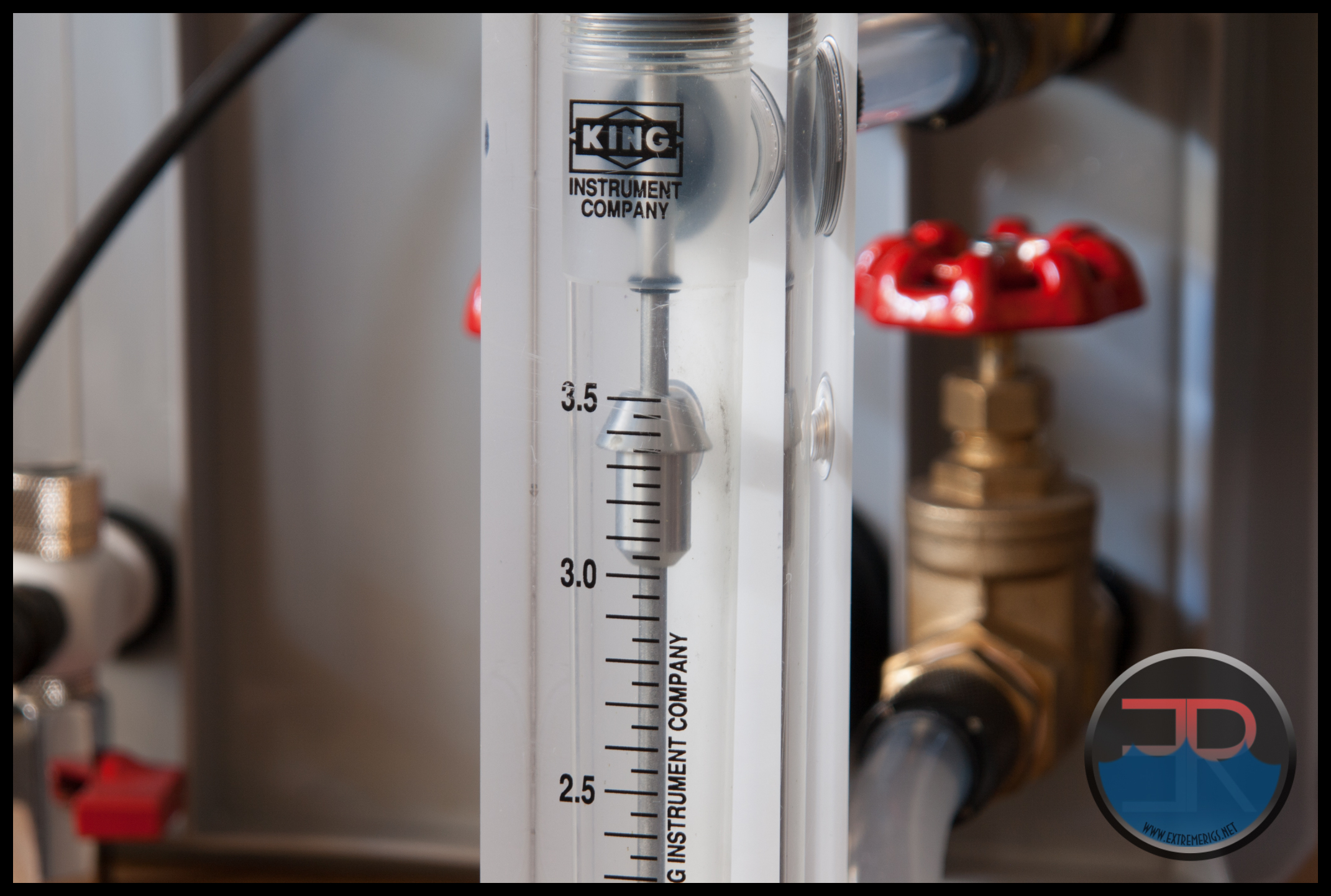
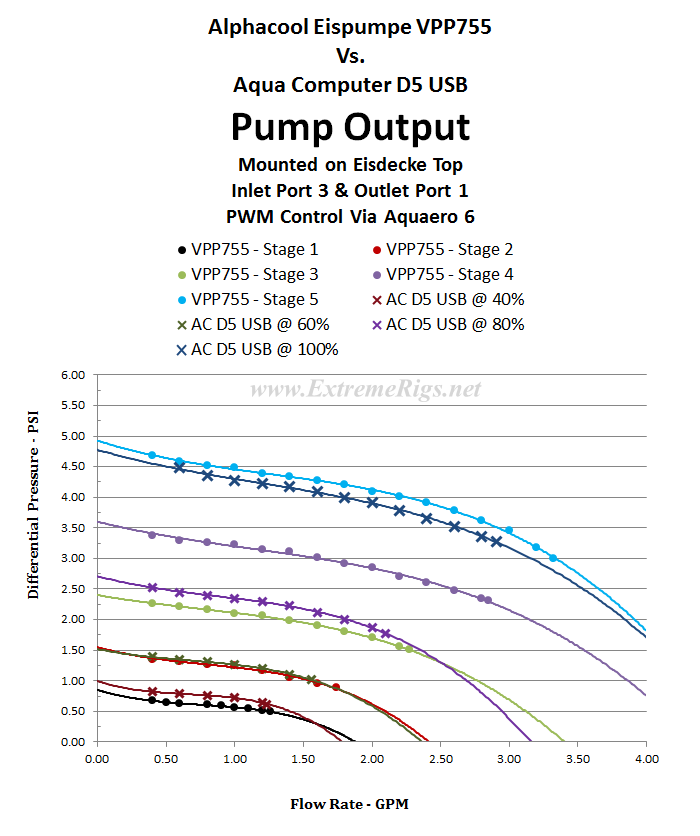




“What the VPP755 does not have yet is a proven track record for reliability”
Just offer a generous warranty, standing by the product.
Yeah and to be fair to Alphacool they claim that it has the same lifetime rating. So all things look good. However I’d always take a product known to last a long time than one that doesn’t even if the latter comes with a warranty. A pump dying can cause all sorts of hassles and I like my rigs to have high uptime and be foolproof cause I don’t have time to fiddle about much 🙂
The exact reason I switched to a D5, my ST mcp50x died after 9 months.
Alphacools false promises like being a true pwm pump & full compatability with existing tops is a major turn off. I’ll consider one when I can choose my own pump top and it actually has true pwm control. Until then ill stick with my Aqua Computer D5 pump motor with PWM input and speed signal.
[…] is all Ice (“Eis”) related. We recently reviewed the Eisbrecher radiator and the Eispumpe VPP755 along with it’s Eisdecke pump top. So we have already covered a fair amount of the new product line up. Neither the Eisbrecher […]
I just received my setup for my dual loops and after putting everything together for the pump/res and testing it for anyone needing to know the Alphacool VPP755 works in the Monsoon MMRS pump/res combo albeit about 2mm short with the o-ring provided by monsoon, but all i had to do was us a extra o-ring and slid it around the D5 cover by monsoon and it fit right in the gap and covers it so you don’t even notice it. I ran it for the first time yesterday and had no leaking issues, now that’s not to say it won’t later on but preliminary testing on my part went smoothly, also it is more quiet than any other pumps i’ve tried and it seems to be a strong pump will know more after testing it more, just FYI for anyone looking to use Monsoons system. Hope this helps.
Those considering buying this may want to wait until Alphacool fixes noise issues. Tons of reports: http://www.overclock.net/t/1624192/alphacool-vpp755-noise
Will this work in a 360mm rad for a CPU and 1 GPU block?
Yes for most common cpu and gpu blocks this will be plenty.
Comments are closed.